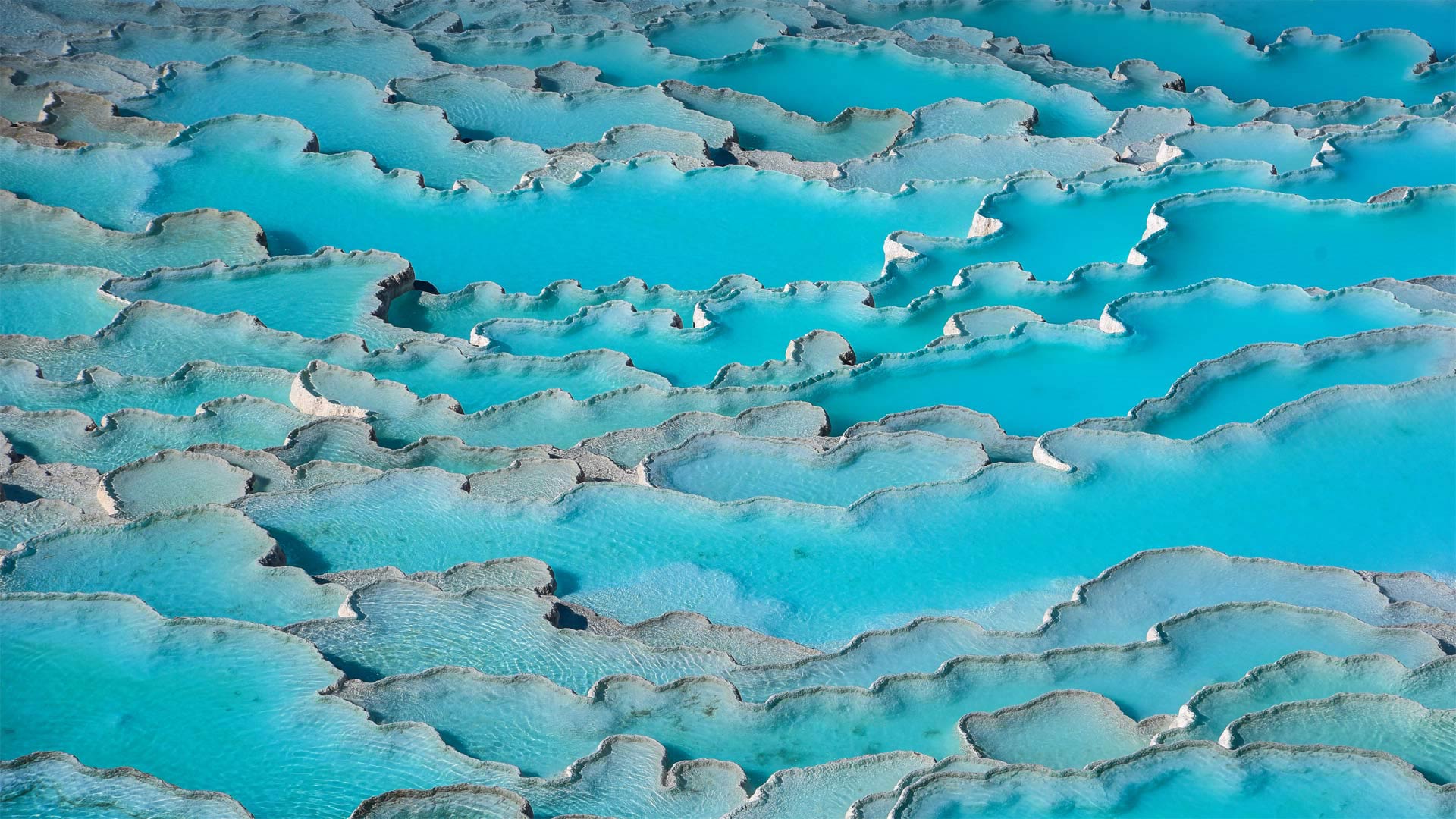土耳其棉花堡的石灰华梯田 Travertine terraces of Pamukkale, Turkey (© bybostanci/Getty Images)

土耳其棉花堡的石灰华梯田 Travertine terraces of Pamukkale, Turkey (© bybostanci/Getty Images)
天堂般的温泉 Heavenly hot springs
Pamukkale, Turkey
The stunning travertine terraces and hot pools of Pamukkale, Turkey, have dazzled visitors since at least the end of the 2nd century BCE and the founding of the Greco-Roman thermal spa of Hierapolis. Since then, people have enjoyed a relaxing soak in the 97-degree Fahrenheit water, claiming curative powers for many ailments.
It makes sense that Pamukkale is also known as the 'Cotton Palace,' in a nod to the fluffy-looking white formations that cover the hillside. That 'cotton' is travertine, a soft limestone that is formed over centuries as calcite-laden water drops from springs on a cliff high above. Here it's a stunning white, but travertine can be found in many different colors, ranging from gray to gold.
The terraces and the ancient ruins of Hierapolis are so unique that they were named a UNESCO World Heritage Site. New restrictions to protect the pools include a cap on the number of bathers, so you may not be allowed to take a dip. But there's plenty to marvel at here. Walk around the ruins of the theater and necropolis, the ancient temples, and bath houses in Hierapolis. You'll be in good company: The hot springs and Hierapolis draw more than 2 million visitors a year, making them one of Turkey's most visited attractions.
帕穆卡莱,土耳其
至少从公元前2世纪末和希拉波里斯希腊罗马温泉浴场的建立起,土耳其帕穆卡勒令人惊叹的石灰华露台和热水池就让游客们眼花缭乱。从那时起,人们在华氏97度的水中享受着放松的浸泡,声称对许多疾病都有疗效。
Pamukkale也被称为“棉花宫”,这是有道理的,因为它与覆盖在山坡上的蓬松的白色地层相呼应。这种“棉花”是石灰华,一种柔软的石灰岩,几个世纪以来,富含方解石的水从悬崖上方的泉水中滴落而成。这是一种令人惊叹的白色,但石灰华有许多不同的颜色,从灰色到金色不等。
Hierapolis的梯田和古代遗址非常独特,因此被联合国教科文组织命名为世界遗产。保护游泳池的新限制包括对游泳人数的限制,因此你可能不被允许游泳。但这里有很多值得惊叹的地方。在希拉波里斯的剧院和墓地遗址、古庙和澡堂周围走走。你会有很好的同伴:温泉和希拉波利斯每年吸引200多万游客,使其成为土耳其游客最多的景点之一。
评论已关闭